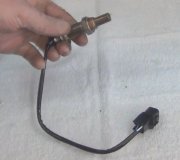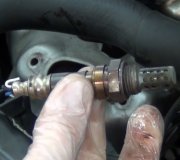First we have to examine all the symptoms and clues. If the engine will not restart after stalling, check for loss of spark, especially if it will restart after cooling down for a half hour. That would be due to a failing crankshaft position sensor or camshaft position sensor. I have additional tests that will confirm that.
If a loss in fuel pressure is the cause it can manifest itself in different ways. I had a plugged pickup screen in my gas tank about ten years ago and the symptoms were it ran fine at highway speeds but stalled as soon as I started coasting. That's when the largest volume of fuel is pumped and it couldn't get through the screen. I've been driving around for over a year with a fuel pressure gauge clipped to my radio antenna so I could watch what was happening now. I just replaced that screen again two weeks ago. The symptom this time was it would spit and sputter at anything over 3/4 throttle or over 80 mph. The inability to exceed 80 mph equates with not being able to drag around my tandem axle enclosed trailer that's bigger than my '88 Grand Caravan I use to pull it. Both times the problems showed up consistently when it was hot out, as in over 80 degrees. I never lost spark and that was proven by the fact I could keep the engine running by playing with the gas pedal to get the fuel pressure back up.
Running rough and stalling can be a result of a spark problem that gets worse or a fuel problem that gets worse under certain conditions. You can use a fuel pressure gauge like I did but for everything else you need a scanner to view live data to see what's going on. Also check for diagnostic fault codes. The fuel supply system is not monitored so there won't be any codes if that is causing the stalling. Most scanners have a record function that lets you take a recording of the sensor data when the stalling occurs. Because that data passes through the scanner's memory, the recording actually starts a few seconds before you press the button.
One last thing we mustn't overlook is did you recently disconnect the battery or let it run dead? If so, "minimum throttle" will need to be relearned. Until then the idle speed will be too low and that could cause misfiring. The clue is the engine will be hard to start and will tend to stall at stop signs unless you hold the gas pedal down 1/4".
Saturday, July 20th, 2013 AT 6:19 PM



